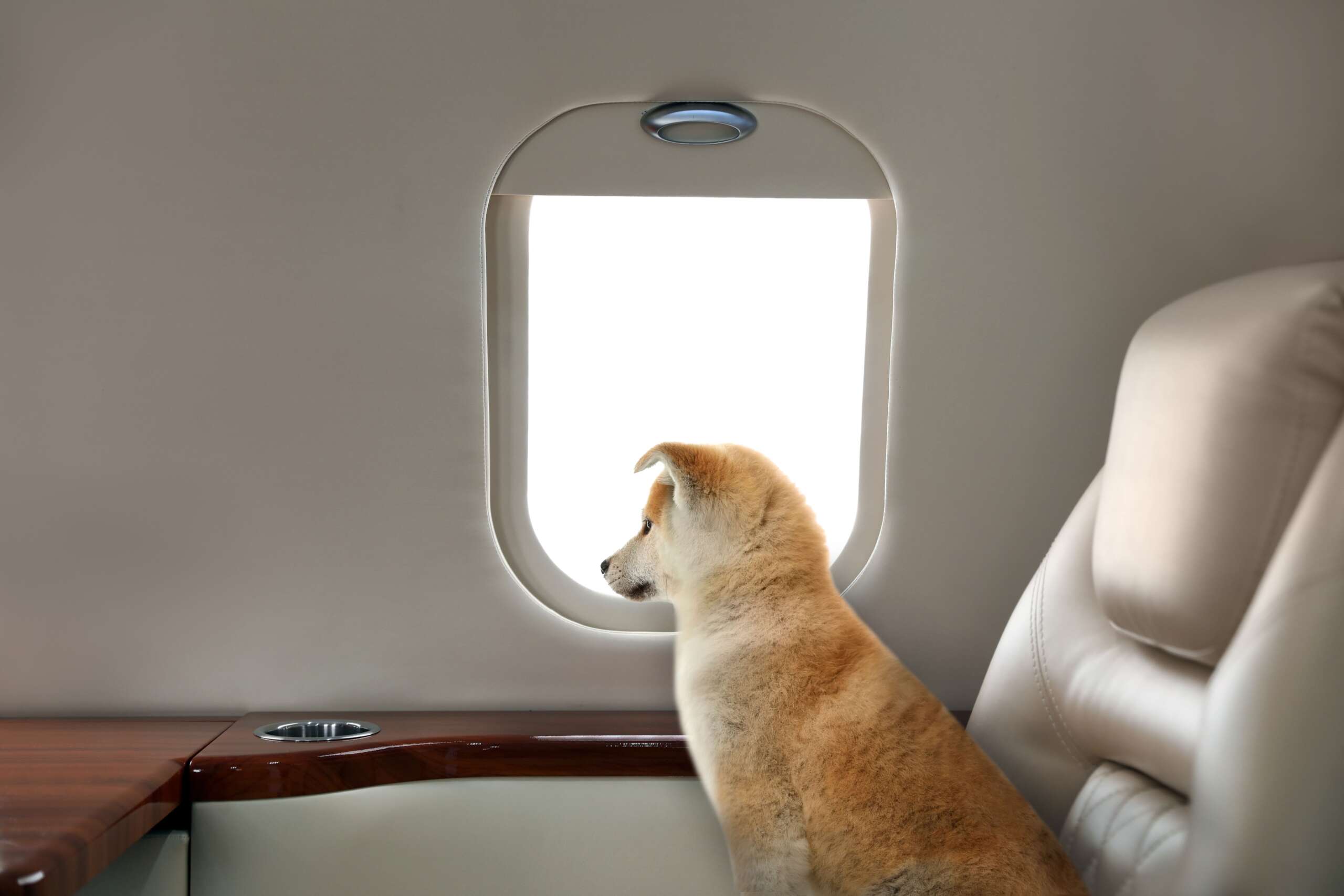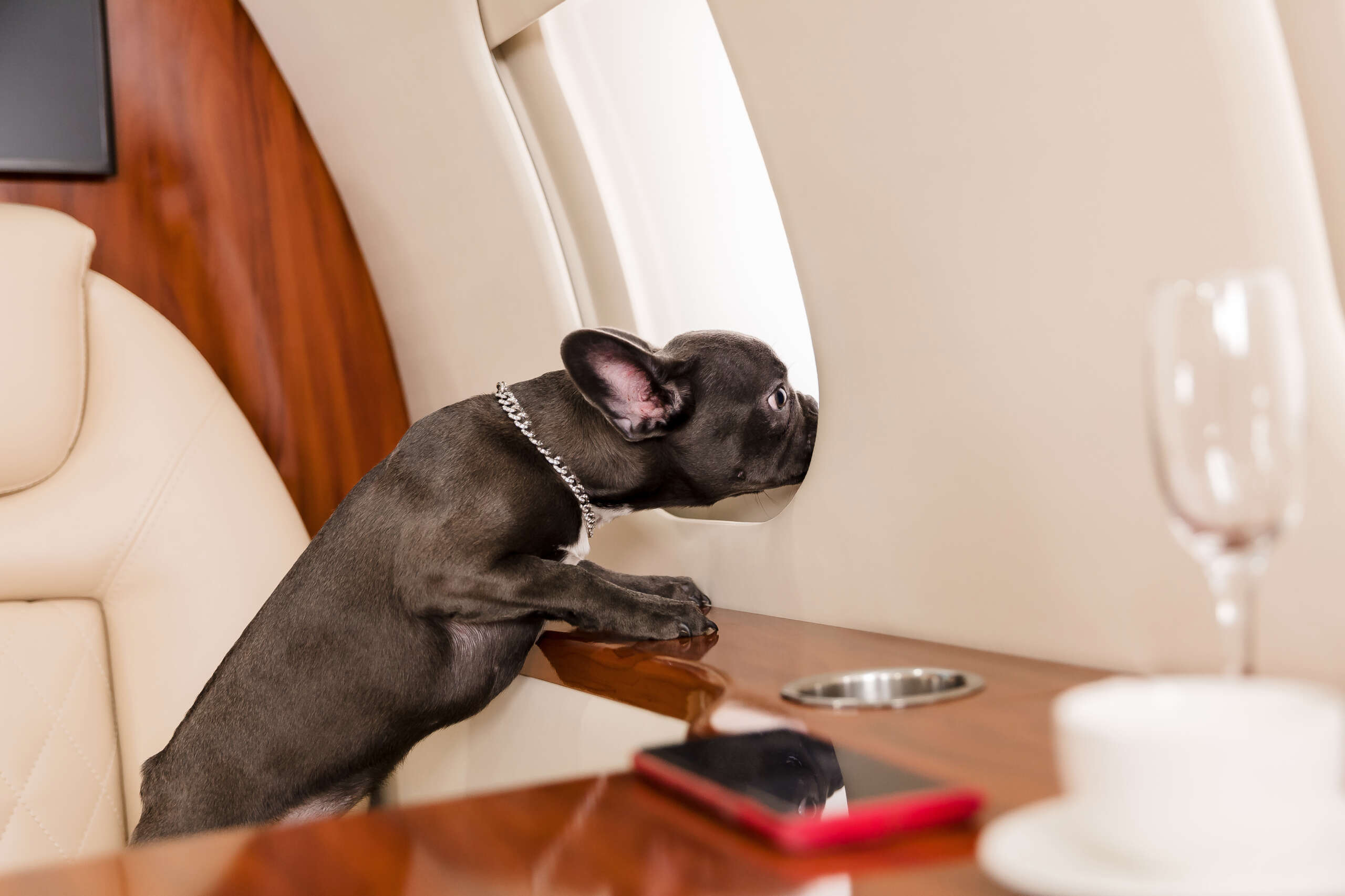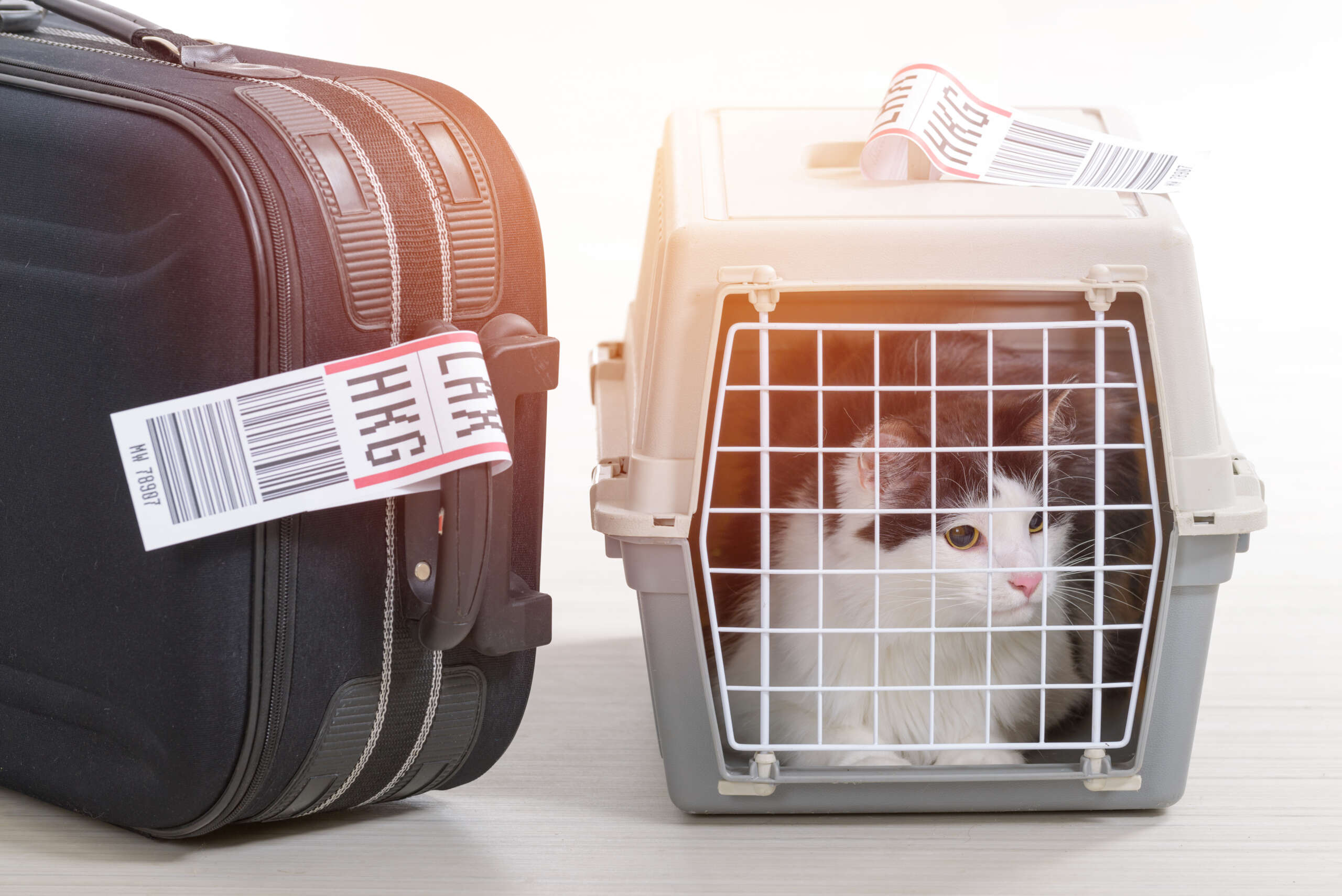The luxury of traveling by private jet hire is increasingly appealing to pet owners who wish to bring their furry companions along. Unlike commercial airlines, chartered flights offer unique benefits that ensure both comfort and safety for animals. This blog post is dedicated to providing essential tips for those planning to take their pets on a private jet. As the rules and preparations differ significantly from standard airline travel, understanding these distinctions is crucial for a safe and pleasant journey.
Whether you’re booking a charter flight for a quick getaway or a longer holiday, this guide goes hand-in-hand with our private jet cost pages to help you navigate the complexities of flying with pets on private jets, ensuring that every member of your family, including your furbabies, enjoys the trip.

Tip 1: Understanding Pet Policies
When planning a flight with your pet, considering the accommodating policies of each airline is essential. Adagold allows pets on private jet charters, offering a pet-friendly environment with provisions for carriers and personalised pet care during the flight. Just make sure to check if your aircraft is appropriate for pet travel when choosing a private jet. In contrast, general Australian commercial airline rules can be restrictive, requiring pets to stay in approved carriers and sometimes travel in the cargo hold, with strict adherence to size and weight limits.
It’s important to review both a charter service’s specific policies and the broader regulations of commercial flights if considering various options. Always ensure compliance with all travel requirements, including destination-specific regulations, to facilitate a smooth and stress-free journey for you and your pet on both private jets and commercial chartered flights. Of course, when you engage Adagold, we take care of all this for you, and can provide you with a number of appropriate options for you and your pet.
Tip 2: Visit the Vet Before Flying
Before embarking on a private jet with your pet, a visit to the veterinarian is crucial. This pre-flight check-up ensures that your pet is healthy enough for air travel on both chartered flights and commercial airlines. During the visit, confirm that all vaccinations are up to date and discuss any concerns you might have about air travel, such as anxiety or motion sickness. Your vet can provide a health certificate, often required by private jet services and commercial airlines alike, certifying that your pet is fit to fly.
Additionally, inquire about preventative measures for common health issues during flights, such as dehydration or ear pressure changes, which can be more pronounced in the unique environment of a private jet. By ensuring your pet’s health is monitored and certified, you can make your chartered flight as safe and comfortable as possible for your beloved companion.
Tip 3: Choose the Right Pet Carrier
Selecting the appropriate pet carrier is vital for ensuring your pet’s safety and comfort on a private jet. For both chartered flights and commercial airlines, the carrier should be sturdy, well-ventilated, and large enough for your pet to stand, turn around, and lie down comfortably. Make sure the carrier is approved by the airline, as private jets often have specific requirements that differ from commercial carriers.
Introduce your pet to the carrier well before your flight to reduce anxiety. This acclimation allows your pet to become comfortable with the space, making the transition smoother on the day of travel. For added comfort, place familiar items such as a favourite blanket or toy inside the carrier. This familiarity can help soothe your pet during the flight on your chartered aircraft, making the journey less stressful for both of you.
Tip 4: Train and Prepare Your Pet
Preparing your pet for a journey on a private jet or a commercial chartered flight involves more than just physical comfort—it also includes behavioral readiness. Start by gradually acclimating your pet to the carrier they will travel in. Place it in a common area of your home with the door open, encouraging exploration and relaxation inside with treats and favorite toys.
Additionally, simulate the conditions they might experience during the flight, such as the sound of an engine, using audio recordings. This training helps minimize anxiety and stress associated with new environments and sounds. Further, consider crate-training your pet if they are not already, as this can significantly ease the process of securing them safely during takeoff, landing, and turbulence on both private jets and chartered flights. Proper training ensures that your pet is not only safe but also comfortable and calm throughout their travel experience.
Tip 5: Manage Feeding and Hydration
Proper feeding and hydration are crucial for your pet’s comfort and health during a flight on a private jet. To prevent travel-related discomforts such as nausea or accidents, feed your pet a light meal about four hours before departure. Avoid feeding them right before or during the flight, as this can lead to an upset stomach.
Hydration is equally important, especially on longer chartered flights where air conditioning can dry out the atmosphere. Provide a spill-proof water bowl in your pet’s carrier and encourage drinking before boarding. However, moderate the amount to prevent frequent urination.
Discuss with your vet the possibility of using hydration supplements if your pet tends to not drink enough under stress. Implementing these feeding and hydration strategies will help ensure that your pet remains comfortable, healthy, and stress-free throughout their journey on private jets or commercial chartered flights.
Tip 6: Exercise Before the Flight
Ensuring your pet has adequate exercise before boarding a private jet or commercial chartered flight is essential for a smooth journey. Physical activity helps burn off excess energy and calms your pet, reducing anxiety and restlessness during the flight. Schedule a long walk or play session a few hours before departure. This timing allows your pet to relax and be ready for rest once onboard.
For pets prone to anxiety, exercise can be particularly beneficial, making them less reactive to the unfamiliar noises and movements of a flight. Remember, a tired pet is a calm pet, which is especially important in the confined spaces of a private jet where space to move is limited. Proper exercise prior to travel can significantly enhance the travel experience for both your pet and other passengers on private jets and chartered flights.
Tip 7: Packing a Pet Travel Kit
When preparing for a flight on a private jet, assembling a comprehensive pet travel kit is a must. This kit should include all the essentials your pet might need during the journey on both chartered flights and private jets. Start with basic supplies such as food, water, and any necessary medications. Include a travel-sized spill-proof water bowl and a few familiar toys to help soothe your pet.
Don’t forget to pack waste bags, a portable litter box for cats, and a compact first-aid kit tailored to your pet’s specific needs. Also, consider including an item with your scent, like a worn t-shirt, to provide comfort and reduce anxiety. Make sure all items are easily accessible during the flight to handle any needs that arise efficiently. Proper preparation ensures your pet’s needs are met seamlessly, enhancing their comfort and safety throughout the flight.

Tip 8: Securing Pets Safely During Flight
Ensuring the safety of your pet during a flight on a private jet is paramount. Properly securing your pet’s carrier is crucial, especially during takeoff, landing, and any turbulence. Make sure the carrier is secured in a location approved by the charter flight’s regulations, often on the cabin floor near your seat. This positioning prevents the carrier from shifting, providing a stable environment for your pet. Use non-slip mats under the carrier to enhance stability.
For larger pets that are not in carriers, use a safety harness that attaches to the seatbelt system of the jet. Check with the private jet service for specific recommendations and provisions for pet safety as regulations can vary between different chartered flights. Following these safety protocols not only complies with aviation standards but also provides peace of mind, ensuring a safer and more comfortable travel experience for your pet.
Tip 9: Address Anxiety and Health Issues
Traveling by private jet or on chartered flights can be stressful for pets, so it’s important to address any anxiety and health issues they may have. Prior to the journey, discuss with your veterinarian about the best strategies to manage your pet’s anxiety. Options may include calming supplements, pheromone diffusers, or, in some cases, prescription medications tailored for travel. Familiarise your pet with the travel environment gradually to lessen their stress.
Bring along items that are comforting to them, such as their favourite blanket or toy. During the flight, monitor your pet for signs of distress, like excessive panting, shaking, or whining. Immediate gentle reassurance can help, whether it’s soothing words, strokes, or holding them if allowed. Understanding and addressing these issues proactively ensures that your pet remains as relaxed as possible throughout their journey on private jets or commercial chartered flights, making the experience less traumatic for them and more enjoyable for all.
Tip 10: Post-Flight Pet Care
After landing from a private jet or chartered flight, it’s crucial to prioritise your pet’s post-flight care to help them recover from the journey. Begin by allowing them to slowly acclimate to the new environment; provide them with a quiet space where they can rest undisturbed. Check for any signs of stress or discomfort that might have arisen during the flight, such as dehydration or anxiety.
Offer them water immediately and a small meal after a short period, depending on their usual feeding schedule. If your pet seems unusually lethargic or continues to show signs of stress, consult a veterinarian promptly. Additionally, take your pet for a gentle walk if possible, to help them stretch out and relieve themselves comfortably. This attention to their physical and emotional needs after traveling on private jets or commercial chartered flights ensures their well-being and helps them adjust smoothly to their new surroundings.

Wrapping Up: Safe Skies for You and Your Fur Baby
Remember, the key to successful pet travel is preparation and understanding the specific needs of your pet. So if you’re considering traveling with your pet and want to ensure the highest standards of comfort and safety, Adagold is here to help you and your pet enjoy the skies together in luxury and peace.


